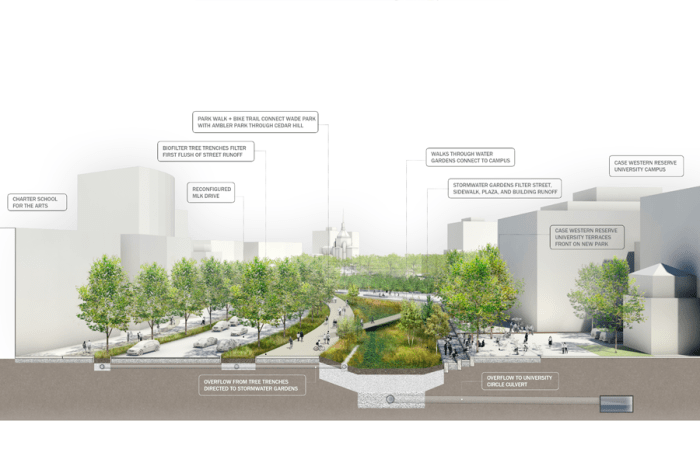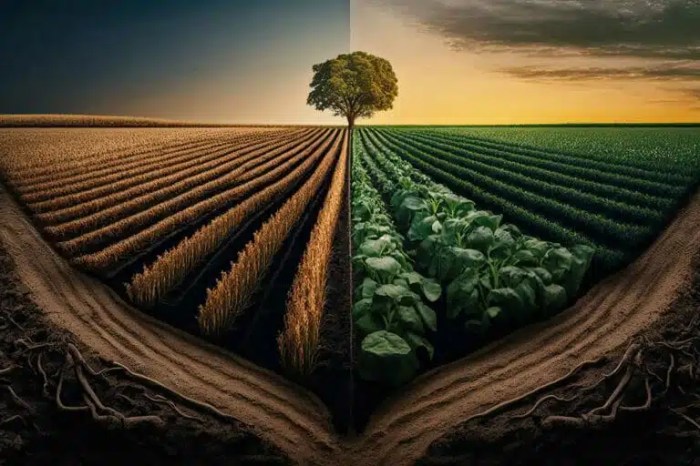As how Olin landscape designs integrate sustainability takes center stage, this opening passage beckons readers into a world crafted with good knowledge, ensuring a reading experience that is both absorbing and distinctly original.
Sustainability in landscape design is not just a trend but a crucial aspect that shapes our environment for the better. Olin Landscape Designs has been at the forefront of integrating sustainability into their projects, setting a benchmark for eco-friendly practices in the industry.
Importance of Sustainability in Landscape Design
Integrating sustainability in landscape design is crucial for creating environmentally-friendly spaces that promote a healthier ecosystem and reduce negative impacts on the environment.
Examples of Sustainable Practices
- Using native plants in landscaping to reduce water consumption and support local wildlife populations.
- Implementing rainwater harvesting systems to collect and reuse water for irrigation purposes.
- Installing energy-efficient lighting solutions to reduce energy consumption and minimize light pollution.
- Incorporating permeable paving materials to reduce stormwater runoff and prevent soil erosion.
Contribution to Ecological Balance
- Sustainable landscape design helps preserve biodiversity by creating habitats for various plant and animal species.
- Reduces the carbon footprint by promoting the use of renewable resources and minimizing waste production.
- Improves air and water quality by reducing pollution and promoting natural processes like filtration and absorption.
Principles of Sustainable Landscape Design

When it comes to sustainable landscape design, there are key principles that guide the process and ensure environmentally-friendly outcomes.
1. Use of Native Plants
One of the fundamental principles of sustainable landscape design is the use of native plants. Native plants are adapted to the local climate and soil conditions, requiring less water and maintenance compared to exotic species. By incorporating native plants, designers can create landscapes that support local ecosystems and reduce the need for chemical inputs.
2. Water Conservation
Another important principle is water conservation. Sustainable landscape design focuses on capturing and reusing rainwater, minimizing runoff and erosion. Techniques such as rain gardens, permeable paving, and drip irrigation systems help to reduce water consumption and protect water quality.
3. Energy Efficiency
Energy efficiency is also a key consideration in sustainable landscape design. By strategically placing trees and shrubs, designers can create windbreaks that reduce heating and cooling costs for buildings. Additionally, the use of deciduous trees can provide shade in the summer and allow sunlight to penetrate in the winter, optimizing energy usage.
4. Soil Health
Maintaining soil health is essential for sustainable landscapes. Practices such as composting, mulching, and avoiding the use of synthetic fertilizers help to improve soil structure, fertility, and microbial activity. Healthy soil supports plant growth, reduces erosion, and sequesters carbon, contributing to long-term ecological benefits.
Techniques for Integrating Sustainability in Landscape Design
Integrating sustainability in landscape design involves the use of innovative techniques to create environmentally friendly and resilient outdoor spaces. By implementing sustainable practices, we can reduce our impact on the environment and promote the health and well-being of both people and wildlife.
Use of Native Plants
One technique for integrating sustainability in landscape design is to use native plants. Native plants are adapted to the local climate and soil conditions, requiring less water, fertilizer, and maintenance compared to exotic species
Rainwater Harvesting
Implementing rainwater harvesting systems is another effective technique for sustainable landscape design. By collecting rainwater from roofs and paved surfaces, we can reduce the demand on municipal water supplies and prevent stormwater runoff, which can lead to pollution of water bodies.
Permeable Paving
Using permeable paving materials, such as gravel or permeable concrete, allows water to infiltrate the ground rather than running off into storm drains. This technique helps to recharge groundwater supplies, reduce flooding, and minimize erosion.
Green Roofs
Green roofs, or roofs covered with vegetation, provide insulation, reduce the urban heat island effect, and absorb rainwater, reducing the load on stormwater systems. They also create habitat for birds and insects, contributing to urban biodiversity.
Composting and Mulching
Implementing composting and mulching practices in landscaping helps to enrich the soil, reduce the need for chemical fertilizers, and suppress weeds. Composting organic waste and using mulch also sequester carbon in the soil, contributing to climate change mitigation.
Benefits of Sustainable Landscape Designs

Sustainable landscape designs offer a wide range of advantages that go beyond just aesthetics. These designs prioritize environmental health, resource conservation, and the overall well-being of ecosystems. Let's explore the benefits of incorporating sustainability into landscape design.
Environmental Benefits of Sustainable Landscapes vs. Traditional Landscapes
- Reduction of water consumption: Sustainable landscapes are designed to minimize water usage through techniques like xeriscaping, rainwater harvesting, and efficient irrigation systems. This helps conserve water resources and reduce the strain on local water supplies.
- Improved air quality: By incorporating native plants and trees into the design, sustainable landscapes can help filter pollutants from the air, reduce carbon dioxide levels, and create a healthier environment for both humans and wildlife.
- Biodiversity preservation: Sustainable landscape designs prioritize the use of native plants and promote biodiversity, creating habitats for local wildlife and supporting the ecosystem's natural balance.
Contribution to a Healthier Ecosystem
- Enhanced soil health: Sustainable landscaping practices such as composting, mulching, and organic fertilization help improve soil quality, promote microbial activity, and support plant growth without the need for harmful chemicals.
- Reduced waste generation: Sustainable landscape designs aim to minimize waste production by reusing materials, composting organic matter, and implementing recycling practices. This reduces the environmental impact of landscaping projects and promotes a circular economy.
- Climate resilience: Sustainable landscapes are designed to withstand extreme weather events, mitigate flooding, and adapt to changing climate conditions. By incorporating resilient plants and green infrastructure, these designs help communities become more prepared for climate change challenges.
Final Conclusion

In conclusion, the seamless integration of sustainability into Olin landscape designs not only enhances the beauty of outdoor spaces but also plays a vital role in preserving our planet for future generations. By prioritizing environmentally-conscious practices, Olin exemplifies how sustainable design can create a lasting impact on both landscapes and communities.
FAQ Corner
How does Olin Landscape Designs prioritize sustainability in their projects?
Olin Landscape Designs prioritizes sustainability by incorporating eco-friendly materials, utilizing water-saving irrigation systems, and designing landscapes that promote biodiversity.
What are some innovative techniques used by Olin Landscape Designs to integrate sustainability?
Olin Landscape Designs utilizes green roofs, rain gardens, and permeable paving to enhance sustainability in their projects.
What are the key benefits of choosing a sustainable landscape design by Olin?
Choosing a sustainable landscape design by Olin not only reduces environmental impact but also creates a healthier ecosystem, conserves resources, and improves overall well-being.







